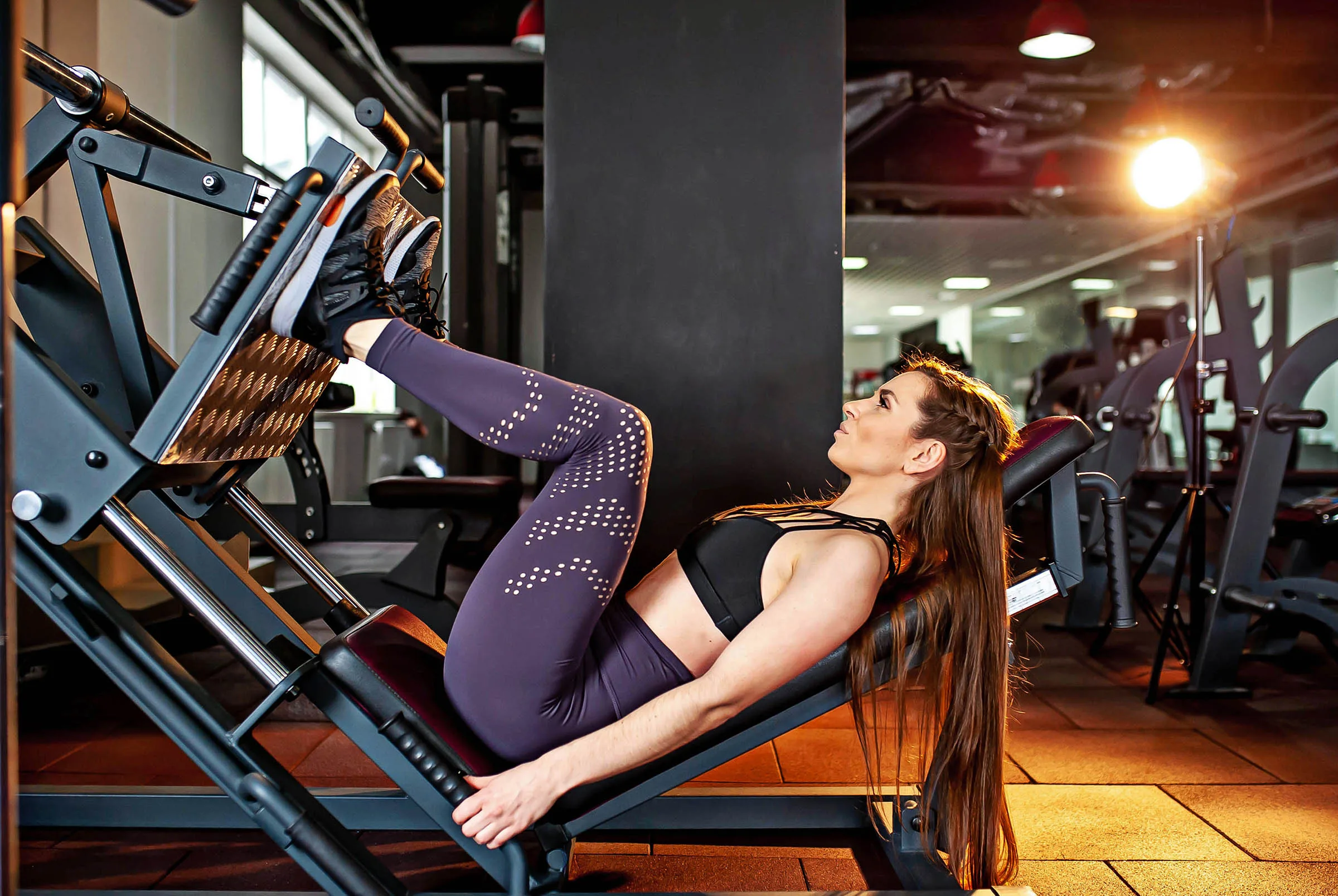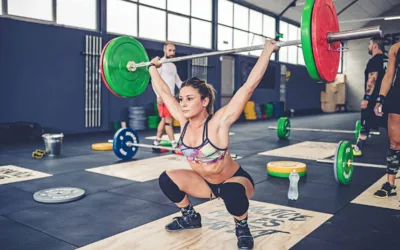Leg Press Like A Pro

Fred Ormerod is a freelance coach, army reserve medic, nurse, master’s student, and masseuse. He’s spent a decade working in healthcare and five years coaching in one of Edinburgh’s leading training facilities. Keep reading for his top tips on how to use the leg press machine to your advantage.
Fred Ormerod


Change the Way You Train
Leg Press: Friend or Foe?
The leg press is an exercise with mixed popularity.
It’s much maligned by functional athletes and many strength athletes as being “not as good as a squat” for strength development and lower body hypertrophy.
There are also a lot of risks associated with poor form and heavy loads on the leg press. Many gym-goers load the machine heavy enough to stimulate their legs, but allow their lower backs or hips to arch away from the seat, which damages the erector spinae and glutes.
I’m sure you’ve seen a video somewhere of a leg press warrior strapped up and barely flexing the knee with an overloaded machine.
To those in the know, the leg press is often not considered a good metric of strength, and, to be honest, justifiably so.
But when you know what you’re doing, it does have its uses. And it can be a magnificent tool for putting some serious muscle mass on your hams, quads, glutes, and calves.
Best Uses for the Leg Press
1. Isolation Training
Using different positions on the leg press board is a great way to isolate or activate specific muscle groups in the lower body, either as a warm-up, pre-fatigue, or accessory movement.
- Wider higher foot stance gleans more glute, hamstring, and adductor activation.
- Narrower, lower stances, fatigue the quads more.
- Straight legs and flexing at the foot in a calf raise hits the gastrocnemius and soleus of the calves.
It’s also possible to replicate a hack squat on some leg press machines by raising the seat, but it’s much easier to do this on a smith machine or an actual hack squat machine.

2. Increasing Training Volume Without Overloading Central Nervous System (CNS)
Another major advantage of using the leg press is the amount of training volume you’re able to do without destroying your CNS.
For example, my squat one-rep max is 200kg, making a rough 10-rep max 154kg.
My total volume of one set of squats is 1540 kg, which honestly sounds horrific.
However, the maximum load on the leg press at my gym is 450kg. I can press this for 10 reps at a relative perceived effort (as long as I’ve had my Weetabix and the pre-workout has kicked in that morning).
The total volume of work put through my legs on the leg press is 4500kg.
Not only is this terrific for my ego, but that volume of training (which might be even more so if I apply eccentric overload training protocols) is basically guaranteed to build muscle and strength in my lower body.
And let’s be honest… no one cares about your one-rep max back squat on the beach when your quads are bursting your board shorts.
Increasing the volume of training (and arguably making it simpler and safer to reach absolute rep failure on the leg press than with a squat) improves local muscular endurance over 6-, 11-, and 16-week training periods.
3. Advanced Recovery Training
This might come as a surprise, but the leg press is actually a brilliant tool for recovery.
By adding more weight than can be lifted, it’s a useful tool for applying isometric training protocols. Especially if you can adjust the seat in different positions.
Isometric training allows for greater muscle fiber recruitment than normal eccentric-concentric training. It also removes any risk of pain an athlete might be experiencing through certain ranges of motion (since they’re not moving).
The leg press machine can also be used to great effect for eccentric overload training (EOT).
EOT allows you to load up to 140% of your normal one-rep max onto a movement. By only performing the eccentric phase (the down bit of a leg press – where muscles elongate) of a movement, you can improve strength gains, range of motion, and hypertrophy.
If trained for a period of time, it can be repeated more often with less delayed onset muscle soreness (DOMS). This is known as a “repeated bout effect.”
These loading patterns should be done progressively and conservatively, for both isometric and eccentric overload training.
Tips on Getting the Most Out of Your Leg Press
When going heavy, make sure your back is supported properly by the backrest so that undue tension is not placed on your lower back. (This is also achieved by using a sensible load.)
1. It’s not necessarily a bad thing for your lumbar (lower back) to pull away from the board, this might even be the aim of the movement – but understand why you’re doing it and do it safely.
See my article on reverse hyperextension and the benefits of loading up the lower back: What’s a Reverse Hyper & Why Should You Do Them?
2. Feel for the muscle groups that are working.
Knees and ankles are flexed and glutes and hamstrings are stretched at the bottom and vice versa at the top as your quads contract.
I suggest playing around a little with the suggested foot positions above to see what works for you. Take a picture or video to help you remember for next time.
4. Use a buddy. EOT is a great training method but is difficult without a friend or two to take the load on the concentric phase of the movement.
5. Think about your brace. Creating pressure and stability in your abdomen makes it easier to press through your lower body.
6. Don’t compare your leg press max with someone’s squat max. They are not the same thing.
If you’re intentional and follow the tips above, you can reap some major benefits from using the leg press machine. I challenge you to add it into your training plan a few days a week and watch your legs explode over time!
Just don’t be put off by the intense DOMS in the first week or two!
Find Your Perfect Training Plan
Sometimes all you need to reach your destination on your fitness journey is an expert guide. We've got you covered. Browse from thousands of programs for any goal and every type of athlete.
Try any programming subscription free for 7 days!
Related articles
3 Ways to Improve Mobility Without Stretching
Are you still trying the endless foam rolling and stretching exercises to get that deep squat position? We know how important mobility is for great, or even GOOD performance. All professional athletes have some comfortability in end ranges of motion. So, what else do...
The Ultimate Guide to Lunges: Queen of all Glute Exercises
Your glutes are the largest muscle group in your body. They’re responsible for almost everything your legs do—walking, running, jumping, squatting, lunging, and just standing upright. As far as moving through space goes, strong glutes are the bedrock of overall...
A Beginner’s Guide to Steel Mace Training
Author: Jesse Grund
Mace training will make you a better mover without it’s not confining you to a fixed space or predetermined range of motion. Second, it’s an offset load with 80 to 90 percent of the weight in the head. You’re also constantly having to resist rotation, which creates greater core engagement.

Join the community
Sign up for the latest training news and updates from TrainHeroic

About TrainHeroic
Made with love, sweat, protein isolate and hard work in Denver, CO
© 2023 TrainHeroic, Inc. All rights reserved.





